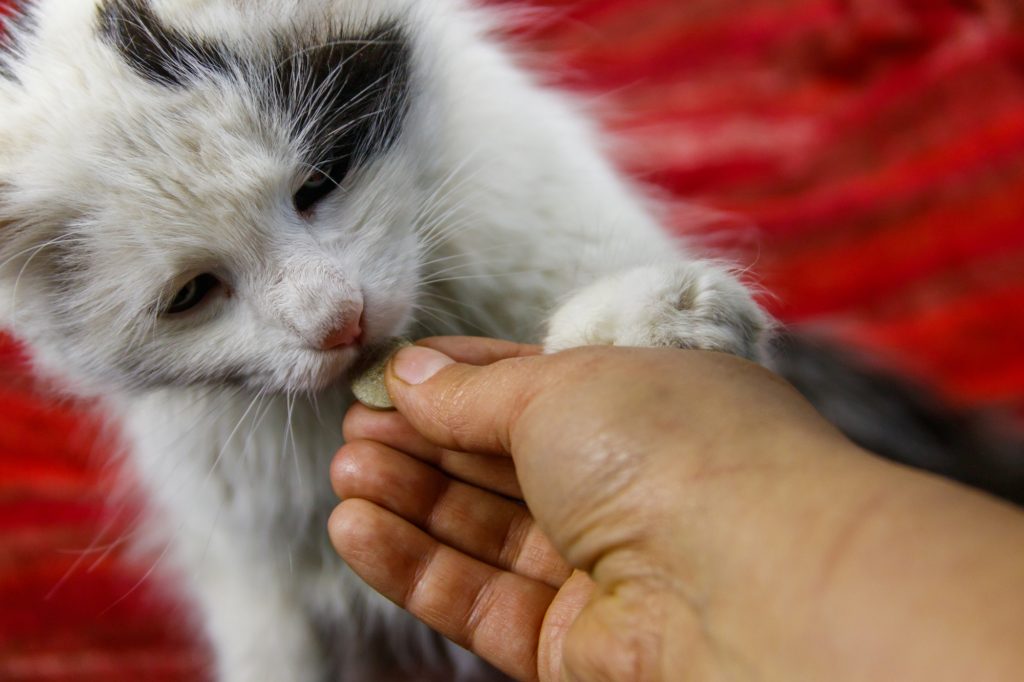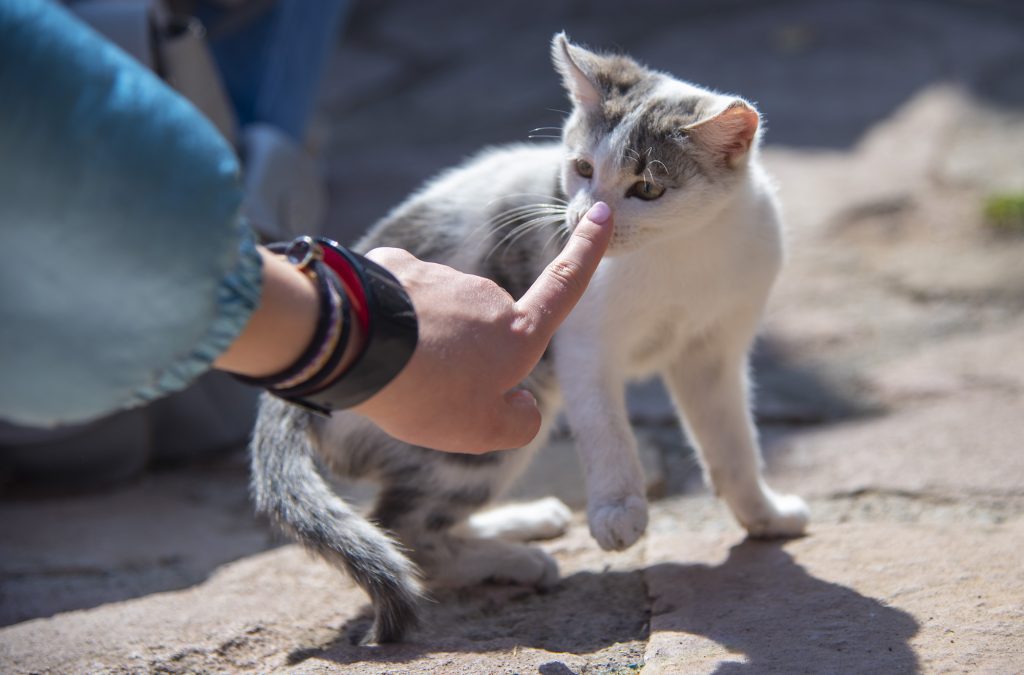Table of Contents
Many pet owners may wonder whether kittens and cats can adapt to crate training, and the answer is a resounding yes. Even the most free-spirited feline can learn to see a crate as a safe space with proper methods. Crate training can be a game-changer when traveling with your cat or managing veterinary visits.
Whether you’re dealing with a curious kitten or a full-grown adult, crate training can significantly ease the stress associated with travel and create a familiar retreat for your pet. Ready to give your cat a cozy space of their own? Let’s embark on the journey of crate training together to ensure your furry friend’s comfort and security. Don’t wait; start crate training today for happier travels tomorrow!
The Difference Between Crates and Carriers
Understanding the distinction between crates and carriers is essential when you plan to travel with your cat for extended periods. A crate is typically more giant and offers more space for movement and a litter box, making it suitable for longer durations and home use. Meanwhile, carriers are more compact and portable, ideal for short trips to the vet or similar outings.

Reasons for Crate Training Your Feline
Crate training offers numerous advantages, from providing a secure environment at home to ensuring your cat’s safety during travel. It can also simplify routine care and reduce anxiety in uncertain situations. Embracing the crate as a positive space can help your cat feel more comfortable and secure, regardless of the circumstances.
1. Safety During Travel
A crate becomes indispensable for your cat’s well-being when traveling. It keeps your cat confined in a secure area, preventing escape attempts in unfamiliar environments. Proper crate training ensures your cat will remain calm and safe, making the journey less stressful for both of you.
2. Managing Behavioral Issues
A crate or carrier can serve as a sanctuary or timeout zone for cats with behavioral challenges. It can be a controlled environment to manage aggression or excessive nocturnal activity, provided it’s used correctly and not as a punishment.
3. Emergency Preparedness
Having a comfortable cat in a crate can be a lifesaver in an emergency. It allows for quick evacuation and ensures that your cat is contained and protected from the chaos of an unforeseen situation. Crate training is an essential aspect of preparedness for any cat owner.
Step-By-Step Guide to Crate Training Your Cat
Successful crate training of adult cats begins with a strategic and compassionate approach. The following steps will guide you through making the crate a positive space for your cat.
Creating a Positive Association With the Crate
Both kittens and cats can learn to love their crate when it’s associated with positive experiences. Introducing treats, playtime, and comfort inside the crate can help build this association.
Introducing Familiarity and Comfort
To make the crate inviting, keep the crate door open and outfit it with soft bedding. Place it in a familiar area where your cat spends a lot of time. This encourages exploration and voluntary use of the crate as a safe and comfy resting spot.
Incorporating Treats and Feeding
Placing your cat’s favorite toy or offering meals inside the crate can motivate them to enter and spend time inside. This positive reinforcement helps your cat connect with the crate and enjoyable experiences.
Gradual Introduction and Consistent Practice
Gradually introducing your cat to the crate and maintaining a consistent routine is critical to successful crate training. Persistence and patience will pay off as your cat becomes more comfortable with their new space.
Allotting Time for Adjustment
Allow your cat to adjust to the crate at their own pace. Start with short periods and gradually increase the time they spend inside. This approach helps prevent anxiety and fosters a sense of security within the crate environment.
Increasing Crate Time Strategically
As your cat becomes more accustomed to the crate, you can strategically increase its time in it. This can include closing the door for brief intervals and extending the duration as your cat remains calm and relaxed.

Addressing Common Concerns About Cat Crating
While crate training is beneficial, some owners may have concerns. To ensure the well-being of your feline companion, it’s important to address these worries with factual information and best practices, such as reinforcement training.
• Is It Cruel to Crate a Cat?
Crating a cat is not cruel when done responsibly and with the cat’s best interests in mind. It can provide security and safety, especially during travel or stressful situations. Proper crate training and love and care contribute to a cat’s overall well-being.
• Can Cats Be Crated Overnight Safely?
Yes, cats can be crated overnight safely as long as their comfort and well-being are prioritized. If done correctly, a night in a crate can be stress-free for a cat. However, ensuring the crate is a space where the cat feels secure and relaxed is essential.
Ensuring Adequate Space and Ventilation
When considering crating a cat overnight, the crate must be large enough for the cat to stand, turn around, and lie down comfortably. Proper ventilation is also crucial to prevent overheating and to provide fresh air. The crate should have numerous openings for airflow and should be placed away from direct heat sources or drafts.
Balancing Crating With Frequent Interaction
Even with comfortable overnight crating, balancing time in the crate with regular interaction and play is essential. Cats are social creatures and need human contact and mental stimulation. Before and after crating, devote time to playing with the cat and providing affection to maintain a strong bond. This balance helps ensure that the cat doesn’t associate the crate with isolation and neglect but rather as just another safe spot in their routine.
Advanced Crate Training Techniques
Advanced techniques can be employed for cats who need a little extra help feeling comfortable in a crate. These methods may include clicker training to reward calm behavior near the crate, gradually increasing the time spent inside, or even feeding meals in the crate to create a positive association.
Overcoming Resistance and Anxiety
Cats may initially resist crating due to anxiety or unfamiliarity with the enclosure. Addressing these feelings of distress is imperative for successful crate training. Patience and gradual acclimation to the crate can help minimize resistance and calm anxious behaviors.
Utilizing Calming Products and Strategies
Incorporating calming products such as pheromone diffusers, sprays, or anxiety-reducing treats can be effective in soothing a cat’s nerves about the crate. Playing soft music or providing a warm blanket that carries the scent of home can also help.
Recognizing Signs of Stress and Comfort
Understanding a cat’s body language is crucial when crate training. Signs of stress may include excessive meowing, panting, or attempts to escape the crate. On the other hand, a relaxed cat might groom themselves, knead their bedding, or curl up and sleep. Recognizing these indicators will guide you in adjusting the training process to ensure your cat’s comfort and well-being during crating.

Ensuring a Successful Crate Training Experience
A successful crate training experience is marked by a cat who views the crate as a safe and comfortable place. This success is achieved through consistent, positive reinforcement and respecting the cat’s pace in adapting to the crate. Regular monitoring and adjustments to the training approach can further enhance the experience, ensuring that the crate becomes a positive aspect of the cat’s environment.
Monitoring Your Cat’s Progress and Well-Being
It’s important to closely observe your cat’s behavior and reaction to crate training. Positive progress is seen when a cat enters the crate willingly and appears relaxed inside. Monitoring for discomfort or distress allows for timely adjustments, ensuring the cat’s well-being is always at the forefront of the training process.
Adjusting the Training Approach as Needed
If a cat shows signs of resistance or stress, it may be necessary to slow down the training process or try different methods. Adjustments can include shortening crate time, changing the crate’s location, or altering the interior setup to increase comfort. Each cat is unique, and flexibility in the training approach can lead to more effective results and a happier feline.
Seeking Professional Advice When Necessary
When crate training challenges arise, it’s beneficial to seek advice from a veterinarian or a feline behavior specialist. These professionals can provide tailored guidance and support, helping to address specific concerns or behaviors. Their expertise can be precious for cats with a history of anxiety or behavioral issues, ensuring the crate training experience is positive for both the cat and the owner.
The Takeaway: Benefits of Crate Training Your Cat
For pet owners, the advantages of teaching adult cats to appreciate their crates are manifold. Crate training a cat can simplify vet visits, making the necessary trips less stressful for the cat and the owner. With a cat crate training routine in place, closing the door on a crate becomes a non-event rather than a trigger for anxiety.
A crate-trained cat can be quickly and safely transported to a secure location in emergencies. Ultimately, through consistent and compassionate training, the benefits of cat crate training extend beyond convenience, contributing to the cat’s overall well-being and the pet owner’s peace of mind.

Hi, I’m Zoey, a devoted mom to two charming Siamese cats. My passion lies in assisting fellow pet owners in providing optimal care for their cats. On CatsEuphoria, I share practical tips and relatable stories, inviting you to join me in appreciating the authentic bond between humans and our beloved feline companions.




